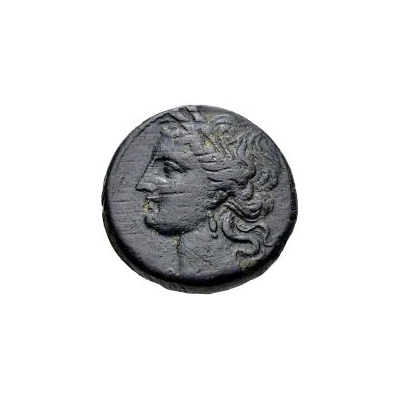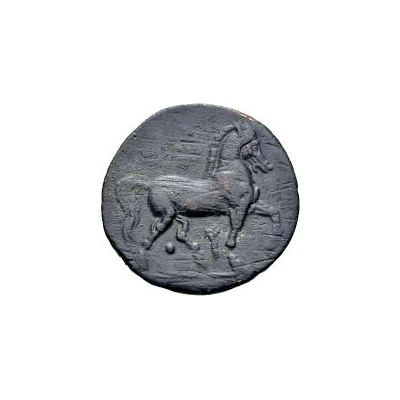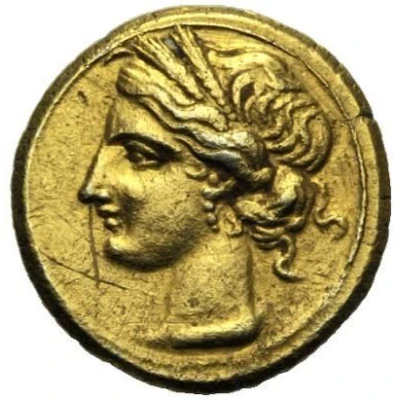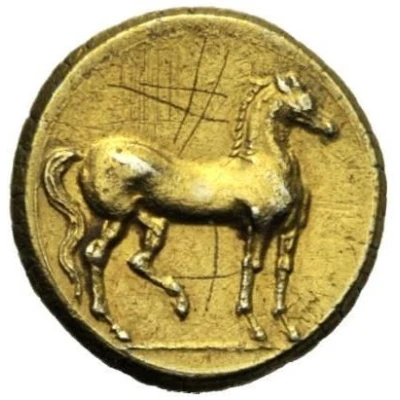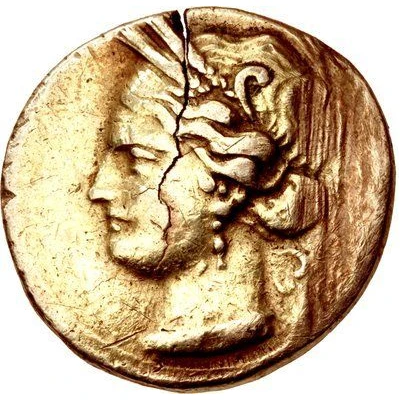
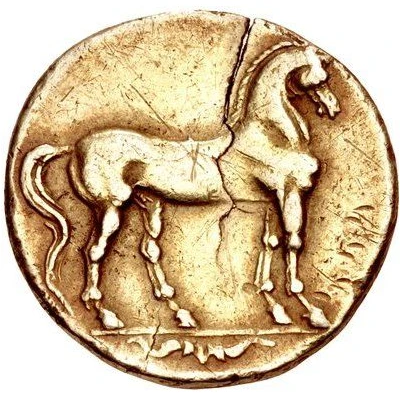

© Classical Numismatic Group, Inc.
⅜ Stater 220 BC - 210 BC
| Electrum | 2.78 g | 16 mm |
| Issuer | Carthage (Zeugitana) |
|---|---|
| Period | Second Punic War (218 BC - 203 BC) |
| Type | Standard circulation coin |
| Years | 220 BC - 210 BC |
| Value | ⅜ Gold Stater (4.5) |
| Currency | Shekel |
| Composition | Electrum |
| Weight | 2.78 g |
| Diameter | 16 mm |
| Shape | Round (irregular) |
| Technique | Hammered |
| Demonetized | Yes |
| Updated | 2024-10-09 |
| Numista | N#324950 |
|---|---|
| Rarity index | 100% |
Reverse
Horse standing right, left foreleg drawn slightly back; bow in exergue.
Interesting fact
The ⅜ Stater coin from Carthage (Zeugitana) made of Electrum weighing 2.78 g was used as a form of currency during the Hellenistic period, and its design was influenced by the Greek coinage of the time. The obverse of the coin features the head of the Greek goddess Athena, while the reverse depicts a standing horse and a palm tree, which were symbols of the city of Carthage. This coin is a rare example of the cultural exchange that took place between the ancient civilizations of Greece and Carthage.
